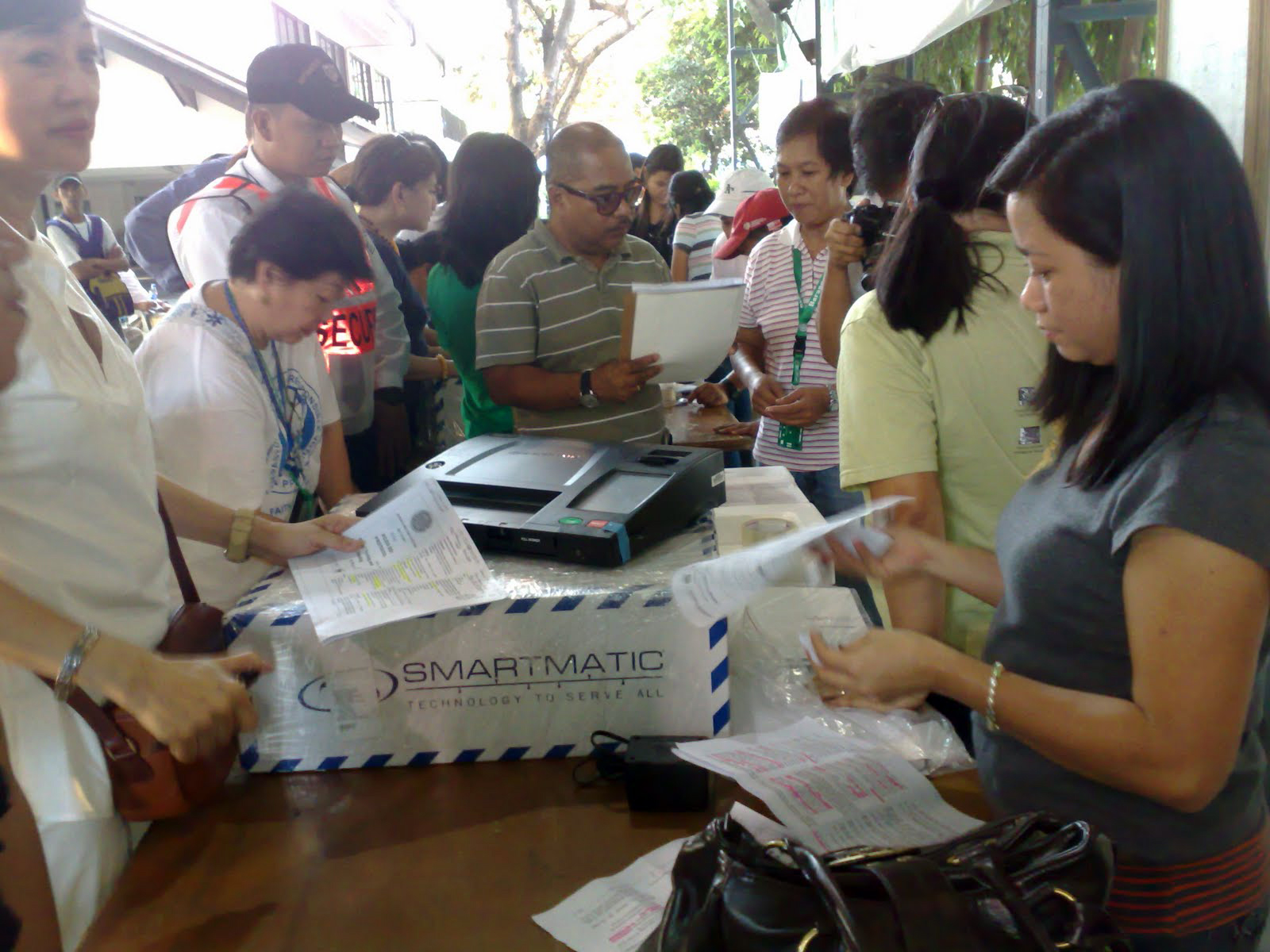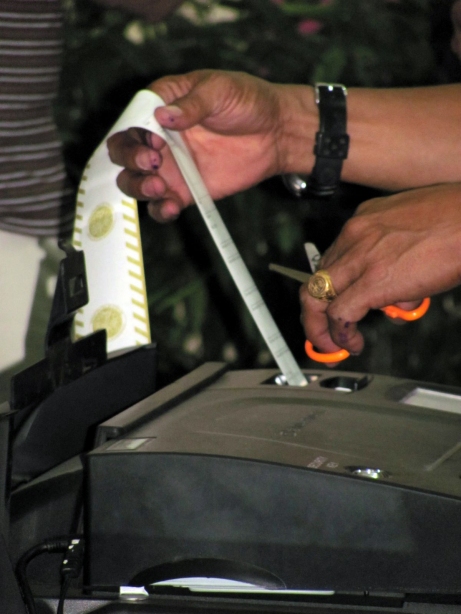By Avery Davis Roberts, assistant director, Carter Center Democracy Program, and Amber Davis, assistant project coordinator, Carter Center Democracy Program
The Carter Center deployed a limited observation mission to observe the use of voting technology to the Philippines’ May 10 election as part of its Democratic Election Standards project, which includes addressing the challenges of observing electronic voting technologies as a core component. The Center sent previous missions to observe e-voting in Venezuela in 2006, and during the U.S. elections in 2008.

Before the Philippines election on May 10, Precinct Count Optical Scans (PCOS) like this one in San Lorenzo village were tested and sealed.
Proponents of electronic voting technologies cite its potential to increase the efficiency of the collation and transmission of results as a means of promoting stability and public confidence in the process. However, the use of new technology in elections also poses significant challenges to the electoral process, rendering critical aspects unobservable and, potentially, limiting the ability for manual verification of results.
The May 10 elections used a precinct count optical scan machine to count and transmit results. This election, during which Filipinos cast their ballots for presidential, legislative, and local offices, was the first in the country’s history to use automated technologies for the counting of ballots on a national basis. A small Carter Center team has been based in Manila for the last two months, observing pre-election preparations and analyzing the impact that this technology will have on the electoral process. The team has also worked to evaluate and update the Center’s existing methodology for observing electronic voting for publication. On election day, this team was joined by a small group of short-term observers who visited polling stations in Manila and elsewhere to observe voting and tabulation.

In Pasay, central Manila, the chairman of the polling station printed multiple copies of election results at the end of voting to share with party agents and domestic observers. These results, captured on paper, could then be compared to the electronic results transmitted to the election commission’s server.
In addition, the Center is pleased to have collaborated with the Georgia Institute of Technology in the development of a smart phone application that replicates the paper observation questionnaire used by election monitors. Using SMS technology, completed forms can now be transmitted directly from remote locations from a specially programmed smart phone. The Carter Center mission included a faculty member from the Georgia Tech Information Security Center (GTISC) and two student leaders from Georgia Tech’s Vertically Integrated Project (VIP) initiative to conduct and evaluate the success of this new technology in the field.
This election observation marks the first time the Center has worked in the Philippines and represents the Democracy Program’s continued interest in the South East Asia region. Because we are deploying such a small team, and will not be able to gather data on a national level, The Carter Center will not release public statements on our observations. However, we will issue a final report that summarizes our pre- and postelection observations that will be made public and shared with the election commission and others in the Philippines.
Please sign up below for important news about the work of The Carter Center and special event invitations.